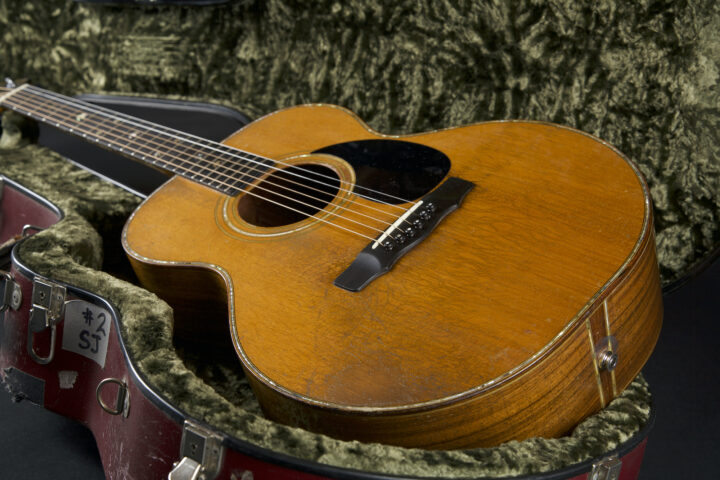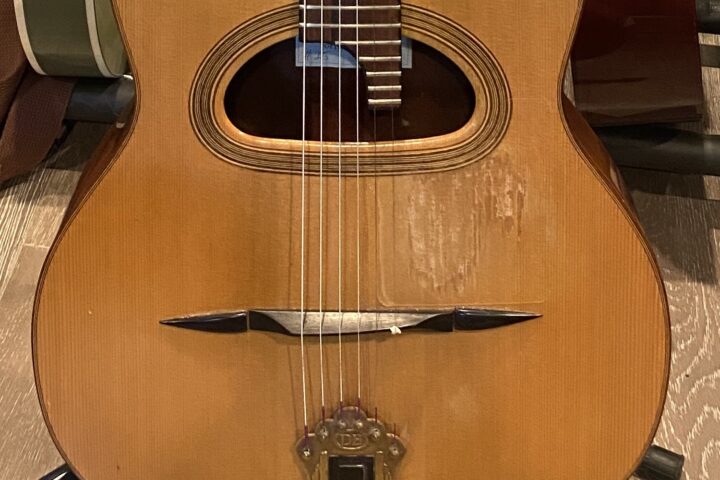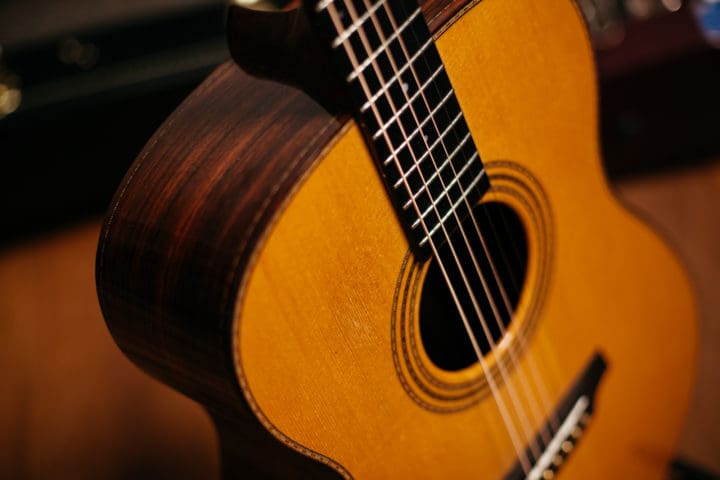By any chance, have your guitars looked a bit less stressed this week? Maybe resonating a little bit longer? A little less tension in those soundboards? A little more snap in those strings? If so, it’s because they heard of this week’s Congressional action. “Congressional action?” you ask. Yep, that very Congress with the 20% approval rating that has seemed incapable of agreeing on a single issue has finally found a cause on which its members from the left, right, and center can agree: the safety of musical instruments!
Here’s the news.
The Bill.
Section 403 of the legislation, the Federal Aviation Administration (FAA) Modernization and Reform Act of 2012, provides:
“An air carrier providing air transportation shall permit a passenger to carry a violin, guitar, or other musical instrument in the aircraft cabin, without charging the passenger a fee in addition to any standard fee that carrier may require for comparable carry-on baggage ….”
But, there must be space in the overhead bins.
If you’ve traveled recently, you know that current airline policy to charge for checked bags has led just about everyone to drag as much as possible onto the airplane. As a result, those overhead bins are usually bulging. This can be problematic, because the new legislation provides that the airline only has to accommodate your instrument if “there is space for such stowage at the time the passenger boards the aircraft.” Simply put, the Act seeks to reverse the current state of affairs. We’ve all had the experience of being told that there simply won’t be enough room in the bins once folks load the suitcases into them. The result is that the objects that can withstand the luggage manglers — the suitcases — get a safe ride while the fragile objects — musical instruments — are sent below to luggage hell. The Act just seeks to reverse that; if you get on the airplane and there’s space for your guitar, you get the space. Those suitcases are then gate checked. In order to avoid forcing the flight crew to make judgments about the relative fragility of objects, the Act allocates the bin space on a first come, first served basis.
So, you’ve got to get on the plane before those bins are filled with bags, coats, and duty-free booze. To figure out how, get thee to seatguru.com. There, you’ll see the boarding policies of all major airlines. You’ll need to pick your seat so as to ensure the earliest possible boarding. Of course, if you hadn’t spent so much on your guitars, you’d be flying first class and you’d have no worries. Alas, your priorities in life have precluded that. So, you’ll need to check airline by airline to see how to game the system. Here are the typical variants, outlined on SeatGuru.com:
Rear-to-front. This is the most common boarding system, practiced by most US and international airlines. Boarding begins with the rear rows and progresses to the front. So, if your airline does this, get yourself one of those noisy rear seats. The good news is that if the noise drives you to drink too much, you’ll be near the rest rooms.
WilMA. United, for example, practices this method of first boarding Window, then Middle, followed by Aisle seats. So, you’re gonna want a window seat.
Run-like-hell. This is the Southwest system that assigns boarding status at check in. So, you’ve got two choices. Either get to the airport early and run to the check-in kiosk. But, if like me, the combination of old knees and a heavy flight case makes running rather imprudent, there’s a better alternative: check-in online. Southwest allows you to check in 24 hours before your flight. Click first and get that coveted “A” boarding group.
Too hard to remember all of this? Have an extra $9 to $19 burning a hole in your pocket? American Airlines will let you buy your way into boarding Group 1. The fee varies depending on the route and you can only do this at the airport. Check to see if other airlines are offering similar options. You’ll get to board early, stow your guitar, sit down next to the families with crying babies, and buy your first drink.
It’s got to fit.
Of course, even if you board early enough to find an empty bin, you’re out of luck if your guitar won’t fit into it. The legislation explicitly states this obvious condition to onboard transportation of musical instruments: “the instrument [must be able to] be stowed safely in a suitable baggage compartment in the aircraft cabin or under a passenger seat”
I’ve had pretty good luck getting full sized guitars, even in Calton cases, onto airplanes. But, some airplanes don’t have overhead bins large enough to accommodate a guitar. Certainly your puddle jumpers aren’t guitar friendly. Most planes used in international flights have bins that can easily swallow a guitar. On the other hand, the planes used in domestic flights do vary and each airline company can specify its own interior dimensions. So a Boeing 737 does not necessarily have the same overhead bin sizes from company to company. Moreover, I’ve been unable to find much information online. So, we guitar players are going to have to share information to make this work.
Effective date.
Ok, you knew that this information was too good to be true, didn’t you? The new law goes into effect as soon as the FAA issues regulations to fill in the details. And, by when must the FAA do that? “Not later than 2 years after the date of enactment of” the Act. So, the FAA has until February 6, 2014.
Better keep that harmonica handy for a couple of more years.
Update: April 7, 2014
Alas, we’ve fallen into a black hole in American jurisprudence. Recall that the law was to go into effect when the FAA promulgated the corresponding regulations. Recall also that Congress commanded the FAA to promulgate those regulations by February 6, 2014. Well, that date has come and gone and the FAA has not even begun the process of drafting the regulations. And, that black hole? There is no legal mechanism by which Congress can force an agency to do its job. As a result, members of Congress have been reduced to pleading, threatening, stamping their feet, and holding their breath until the FAA acts. So far, the FAA has not been impressed.
Stay tuned. And hang onto that harmonica.
Update: January 1, 2015
On December 29, 2014, just in time for your 2015 world tour, the US department of Transportation promulgated the regulations that will, finally, put into effect the FAA Modernization and Reform Act of 2012. The regulations, and, thus, the act become effective 60 days after the regulations are published in the Federal Register, which occurred on January 5. So, as of March 6, you can happily carry on board any US-based aircraft “a violin, guitar, or other small musical instrument.”
Well, only if, as explained above, your instrument fits in the overhead compartments or under the seat and only if those who board before you don’t pack those compartments with duty-free booze, their carry-on luggage, jackets, diaper bags, or other parafrenelia. So, board early.
What if your instrument doesn’t fit in the designated spaces, you can purchase a seat for it. If it’s too large for a seat or your wallet is too small to enable you to make the purchase, you can check it as luggage, but only so long as “the instrument does not exceed 165 pounds or the applicable weight restrictions for the aircraft.” So, leave those Les Pauls at home.
The Department of Transportation has also posted a webpage providing “useful tips and information for consumers on how to prepare for air travel with musical instruments.” The site provides such tidbits as advising that you “mark the instrument case ‘Fragile’ — even when it’s shaped like a musical instrument. In my view, such a marking may only serve to taunt the baggage handlers, so slap those stickers on at your own risk.
Happy trails!
Find this article helpful? If so, we hope you’ll subscribe to the Fretboard Journal print edition here. Every issue we publish is geared for fretted instrument connoisseurs and collectors such as yourself.


